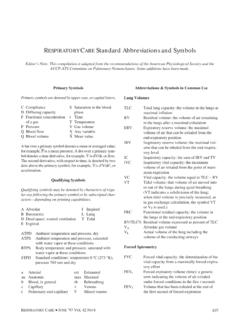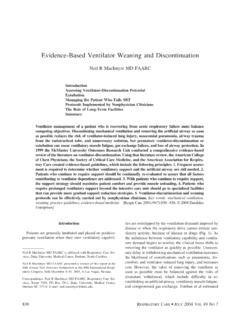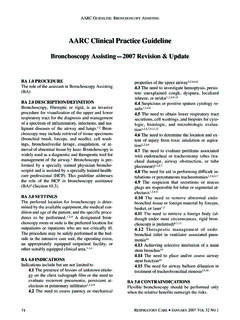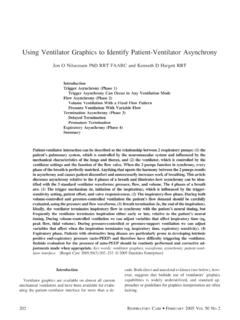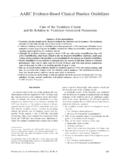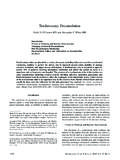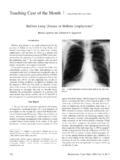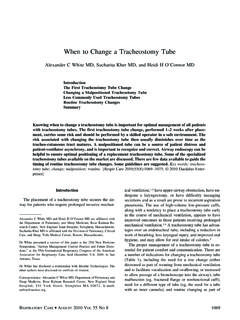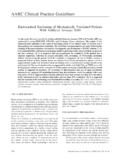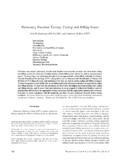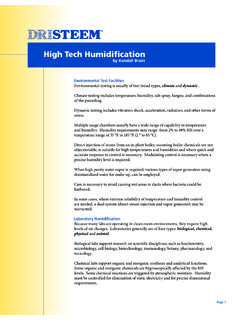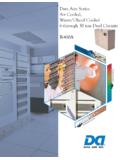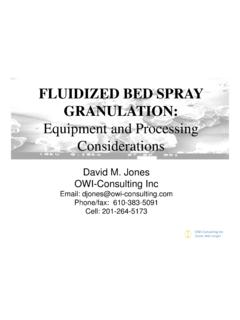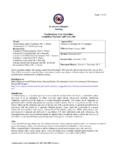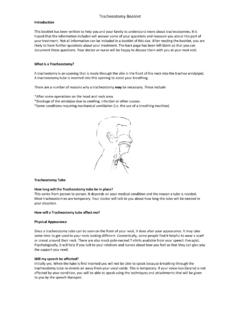Transcription of Is Humidification Always Necessary During Noninvasive ...
1 Is Humidification Always NecessaryDuring Noninvasive Ventilation in the Hospital?Richard D Branson MSc RRT FAARC and Michael A Gentile RRT FAARCI ntroductionNormal HumidificationHumidification During Invasive VentilationPro: Humidification Is Needed During Noninvasive VentilationPatient ComfortAirways ResistanceSecretion Retention and RemovalSuccess of Noninvasive VentilationCon: Humidification Is Not Needed During Noninvasive VentilationLong-Term Versus Short-Term Noninvasive VentilationAmbient Air Supplies Enough Humidity for Short-Term NoninvasiveVentilationCost Versus Benefit of Humidification During Noninvasive VentilationEvidence Is Strong to Eliminate the Heat-and-Moisture ExchangerFrom the Noninvasive Ventilation CircuitSummaryNoninvasive ventilation (NIV)
2 Is a standard of care for the treatment of exacerbation of chronicobstructive pulmonary disease, to prevent intubation and reduce morbidity and mortality. The needfor Humidification of NIV gas is controversial. Some unique aspects of NIV conspire to alter thedelivered humidity and airway function. In the presence of air leaks, unidirectional air flow driesthe airways and increases airway resistance. Patient comfort is also a critical issue, as tolerance ofNIV is often tied to patient comfort. This paper provides the arguments for and against routinehumidification During NIV in the hospital setting.
3 Data from clinical research demonstrate theeffects of delivered Humidification on relevant physiologic variables. The impact of humidificationon NIV success/failure remains words: mechanical ventilation; Noninvasive ventila-tion; NIV; Humidification ; chronic obstructive pulmonary disease. [Respir Care 2010;55(2):209 216. 2010 Daedalus Enterprises]Richard D Branson MSc RRT FAARC is affiliated with the Departmentof Surgery, University of Cincinnati Medical Center, Cincinnati, A Gentile RRT FAARC is affiliated with the Division of Pul-monary and Critical Care Medicine, Duke University Medical Center,Durham, North Branson and Mr Gentile presented a version of this paper at the 44thRESPIRATORYCAREJ ournal Conference, Respiratory Care Controver-sies II, held March 13-15, 2009, in Cancu n, Branson has disclosed relationships with Ikaria, Bayer.
4 Newport,CareFusion, and Covidien. Mr Gentile has disclosed no conflicts of : Richard D Branson MSc RRT FAARC is affiliated withthe Department of Surgery, University of Cincinnati Medical Center,PO Box 670558, 231 Albert Sabin Way, Cincinnati OH : FEBRUARY2010 VOL55 NO2209 IntroductionNoninvasive ventilation (NIV) for the treatment of ex-acerbation of chronic obstructive pulmonary disease(COPD) to prevent endotracheal intubation reduces mor-bidity and therapies, including bron-chodilator, fluid management, and secretion clearance, arepart of a successful NIV appropriate appli-cation of Humidification During NIV, however, is poorlyunderstood and not uniformly issuerequires further study, as Humidification may play an im-portant role in the success of NIV, because it relates tosecretion removal and patient will address the points of contention regarding hu-midification During NIV.
5 Discuss the available evidence,and, where evidence is lacking, provide our opinions onbest practice, based on our experience. Data supportingboth sides of the argument will be presented, with a finalconsensus as a HumidificationThe respiratory tract heats and humidifies inspired gasso the gas entering the alveoli is warmed to body temper-ature and fully saturated with water vapor. This conditionis commonly referred to as body temperature, atmosphericpressure, and saturated with water vapor (BTPS).6 Duringnormal breathing through an intact upper airway, inspiredgas entering the trachea is warmed to 29 32 C and is fullysaturated with water vapor.
6 In the mid-trachea, tempera-ture and absolute humidity reach approximately 34 C andabsolute humidity is 34 38 mg H2 point atwhich the gas reaches 37 C and 100% relative humidity(whichcorrespondstoanabsolutehum idityof44 mg H2O/L) is known as the isothermic saturation bound-ary, 6which is located below the carina During quiet breath-ing, in the third to fifth generation of the bronchial ,8 Humidity and temperature are constant below the isother-mic saturation boundary, while above the isothermic sat-uration boundary the airway acts as a counter-current heat-and-moisture and moisture exchangecontinues as long as there is a thermal and moisture dif-ference between the gas and the airway mucosa.
7 The greaterthe difference, the greater the transfer of heat and hyperventilation or when cold, dry air enters thetrachea; the isothermic saturation boundary moves furtherdown the bronchial tree, pressing the lower respiratorytract into assisting with heat and moisture ,11 Expiratory gas is cooled when traversing the airway abovethe isothermic saturation boundary, resulting in water con-densation. However, the upper airway recovers only a partof the added inspiratory heat and moisture. During normalbreathing, the temperature of expired air ranges from 32 Cto 34 C at 100% relative normal conditions for room air (temperature 22 C,relative humidity 50%, ambient humidity 9 mg H2O/L)and with a minute ventilation (V E)
8 Of approximately 8 L/min, the respiratory tract evaporates about 400 g of waterduring inspiration each day, and approximately 150 g ofwater condenses During expiration, so the daily water needfor respiratory Humidification is about 250 ,10 Humidification of inspired gas is typically provided byevaporation of water from tracheobronchial secretions. Thelatent heat of vaporization is the heat that must be added toa liquid to change its state to vapor at a given temperature(or the amount of heat released when vapor condenses toa liquid).
9 11 The latent heat of vaporization of water isapproximately 540 kcal/kg. As liquid water evaporates,sensible heat in the liquid is converted to latent heat in thevapor leaving the liquid, and the temperature of the re-maining liquid falls. Evaporation cools the airway. Themore water evaporating from the airway surface, the greaterthe airway temperature drop in that airway surface , in the airway this cooling effect is partially com-pensated for by heat and water provided by the bronchialblood flow.
10 In a normal adult the daily respiratory evap-orative heat loss is approximately 250 kcal, 65 70 kcal ofwhich are recovered by condensation During ,13 The intensity of heat and moisture exchange increaseswith breathing dry and cold air, and with increasing V ventilation is provided via face mask instead of viaendotracheal tube, the inspired gas is heated and humidi-fied by the upper airways. NIV is a special circumstance ofthe patient breathing a high V Eof cool, dry gas. WhenNIV is supplied via an intensive-care ventilator, the gas istypically anhydrous wall air and/or oxygen.
